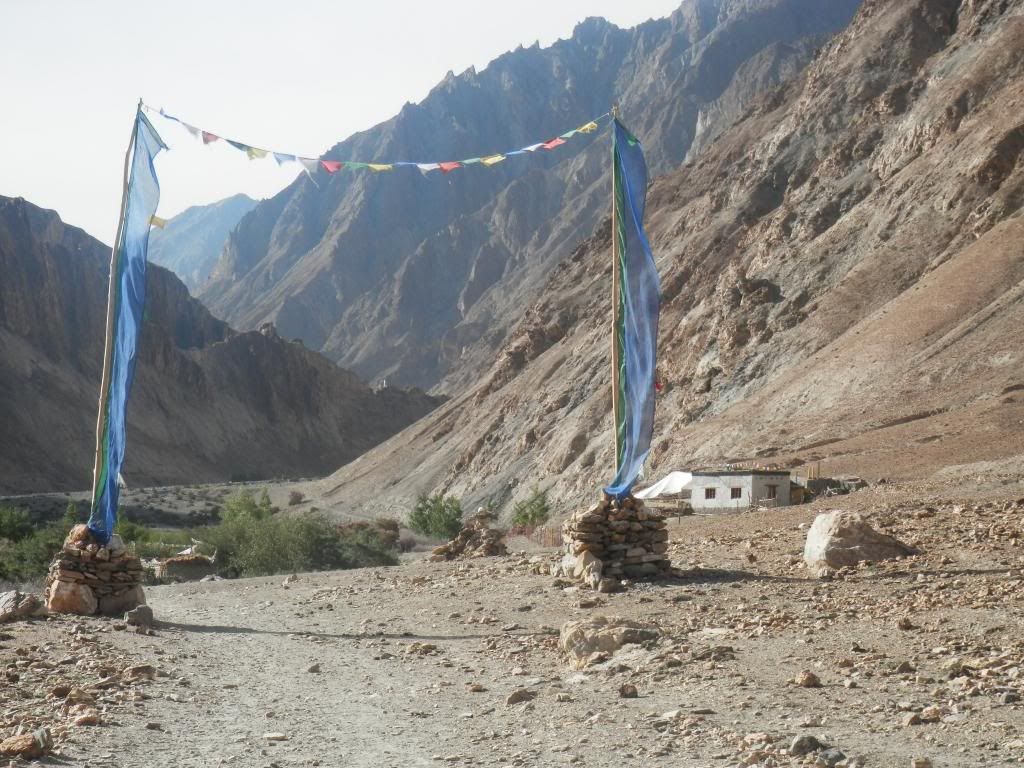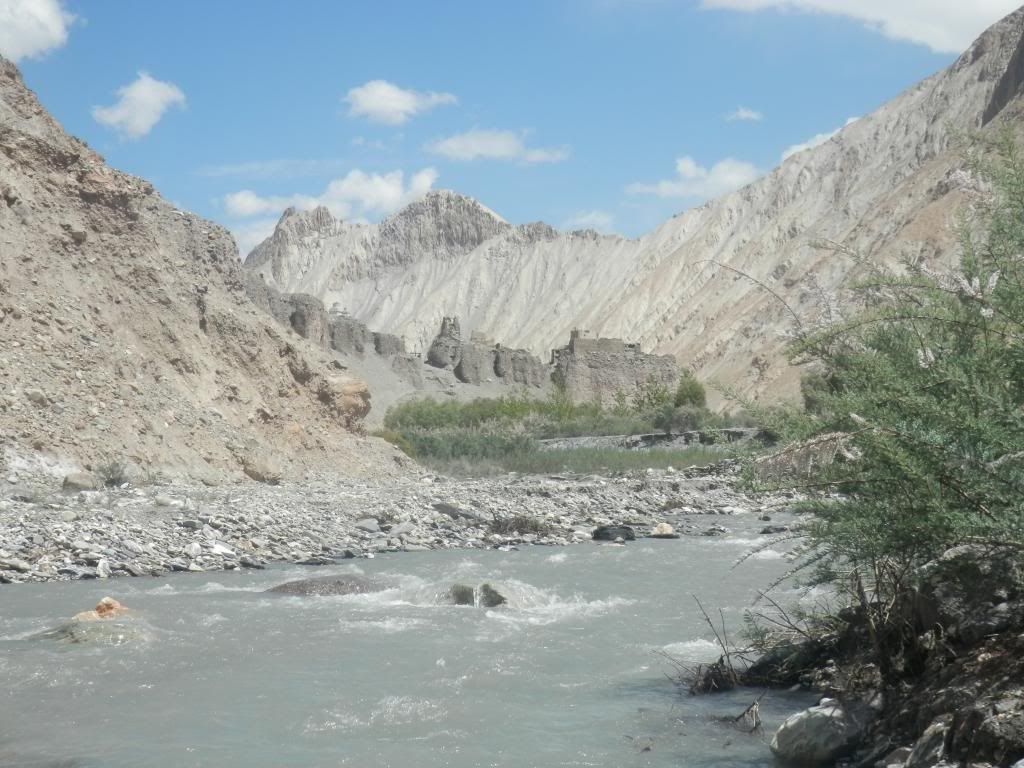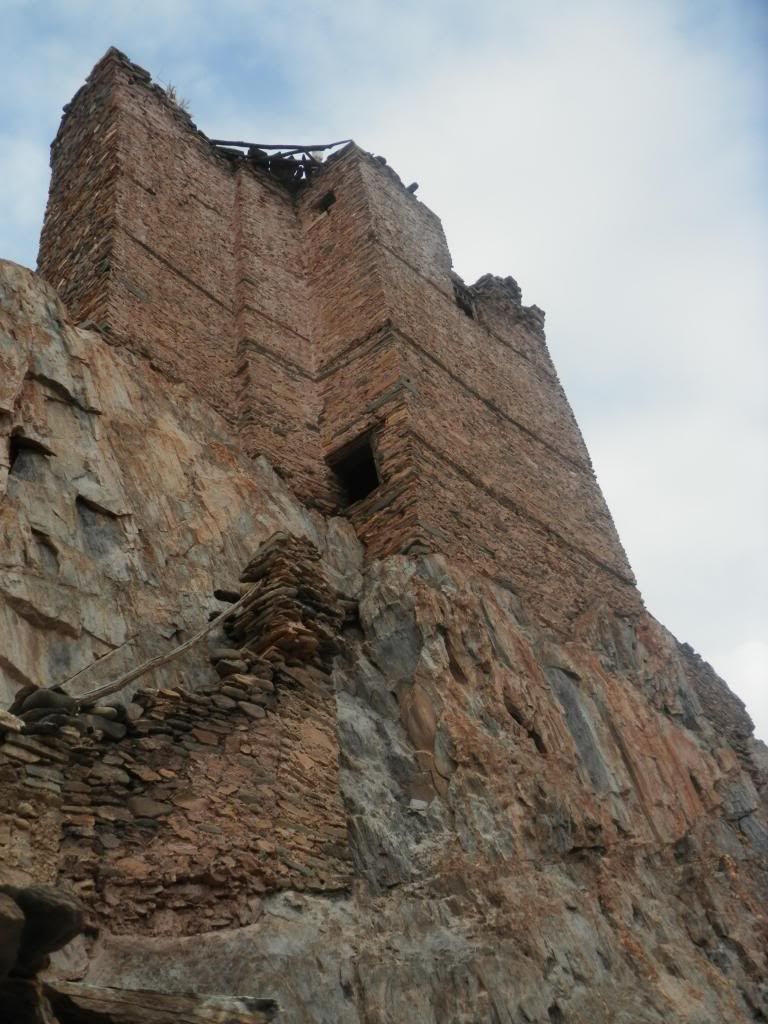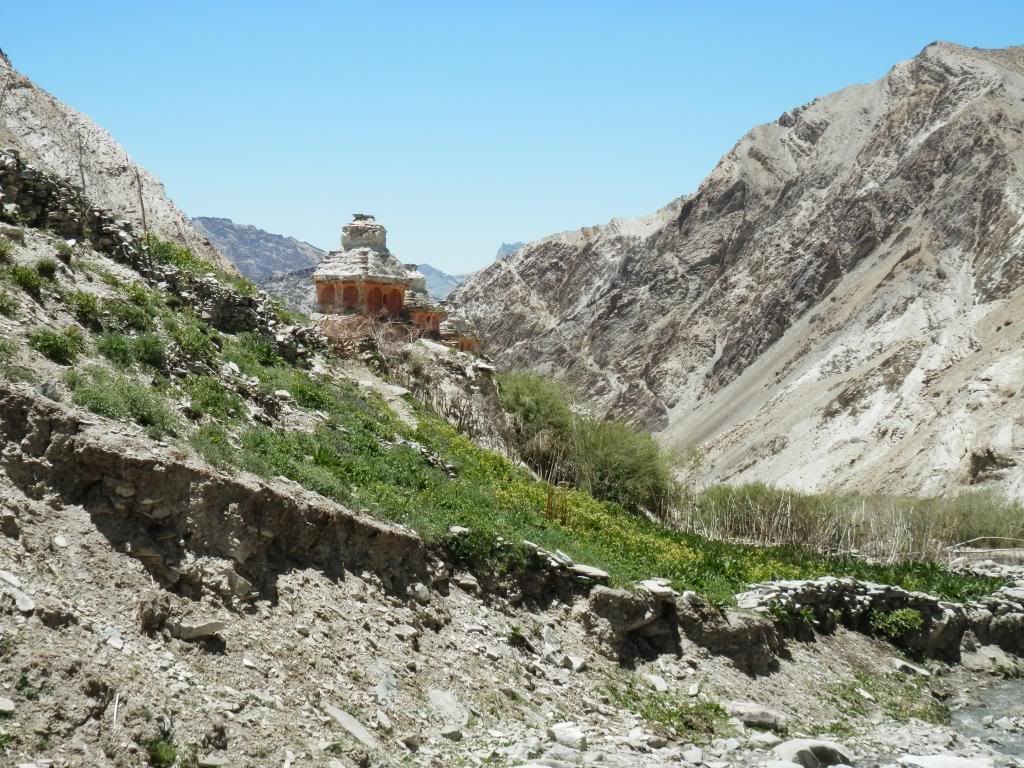Travel diary - India - Markha valley in Melbourne Diaries
- Feb. 10, 2014, 5:20 p.m.
- |
- Public
The next couple of days are a comparatively relaxed stroll beside the Markha river. It’s another popular trekking area, and more groups are sighted. There’s a lone Indian trekker with an 80s style boombox secured to his backpack, blaring out Bollywood music across a valley that probably doesn’t want to hear it. Another solo traveller is a Canadian woman in her sixties, Garry worrying that she is completely ill-prepared for the second half of the Markha trek over a 5,000m pass. One morning, we also encounter a thin couple in their early thirties sleeping beside the river itself, a foolhardy practise in a region prone to flash flooding (they are later seen struggling greatly in crossing the river). There are also two cheerful Scottish trekkers who I take a liking to, helping them across one of the rickety Markha bridges and showing them where they are on the map (I managed to find what is perhaps the only realistic map of the area, and it has become a valuable commodity). Finally, powering past us as always, are the resurgent Germans mentioned in an earlier entry, who have recovered well from a bout of altitude sickness.
 On the trail - Sara
On the trail - Sara
If Indians make Western films (and they probably do), they likely shoot them in a place like this – I’m walking in cowboy country now. From the murky grey of the days’ travels, the rocks turn bright tan in colour, forming odd shapes, caves and rectangular towers straight out of Monument Valley. The altitude is, at 3-3500m, slightly lower than usual, making breathing easier. However, during the day the temperature now reaches the high 20s, causing problems for the locals – even ultra-fit Lopsang is struggling to cope in this uncommon weather. The heat, though, is offset by the need, several times a day, to cross the glacial Markha River, which is fed from the snow lodged up in the Stok Kangri peak to the North. Although the water only comes up to my waist, it is well below freezing and at times very fast moving. Each step has to be concentrated on, as a slip on the stony riverbed could potentially send one on a nasty trip downstream. Upon leaving the river, there is a rush to change socks, put on warmer clothing and get the blood circulating again. It’s a minor discomfort, though. This section of the valley is uniformly beautiful. On the north side are the snow capped Stok mountains while to the south is the jagged cliff-face of the Zanskar range. Between are shrubby trees, roaming chuka and other chirping birdlife.
 Markha river crossing
Markha river crossing
The valley is also dotted by the smaller towns – Skiu, Nakdi, Sara, Hangkar – and the small soya bean farms that surround them. The parachute tents selling items to trekkers are more frequent, and one at Sara even has cold beer for sale. At the town of Markha, though, there is a sight that is emblematic of modern India – a group of Nepalese workers, thin, malnourished, arms like rope, who in the stifling heat carry large, crushingly heavy piles of bricks on their back from one location to the next. The strain in this high altitude climate must be incredible. It seems like a pointless way of destroying a man, as in Australia it could be equally accomplished at far less pain with the purchase of a $50 wheelbarrow. It is a reminder that Ladakh, while beautiful, spiritual and full of the most incredible wonders, remains a place for incredibly poor.
At the Markha camp, I meet up with a new companion for the journey, a stray terrier-shaped dog who I instinctively name Lucy. Unlike the others in my group, she is able to keep up and spends a lot of the day cheerfully lapping at my shins. There are several stray animals in the region that make their living by scrounging food off hikers, and Lucy is content enough with the spare biscuits I chuck in her direction to tag along beside me across much of the valley. She’s a hardy animal, only phased at a particularly violent river crossing, where she at first looks up imploringly at me in the hope that I’ll carry her across. Fat chance. I walk to the other side and watch as, with great hesitation, she enters the water and only just makes it to the other side before potentially being carried into an eddy. She then spends the next ten minutes pathetically whimpering beside me about the cold water before charging off on one of her regular chuka hunts. Scabby, mangy stray dogs are a key feature of most Indian cities, particularly Leh where they seen to form a society in itself. During the heat of the day, they are less noticeable while sleeping beside the road, centimetres from traffic, but when darkness falls they engage in an endless canine warfare with each other, a chorus of howls and yelps throughout the night. In the cool of an early morning, they can be seen roaming in packs of ten to twelve, some (the losers of the previous night’s battles) with scars across their bodies or even entrails hanging out. The final Markha valley destination is Hangkar. It’s a very sunny day, and a chance to relax within the last town before a detour to the South. [Lucy promptly abandons us at the sight of two French trekkers.]
 Lucy
Lucy
Having spent almost a week washing from small bowls of water, Bob and I decide that the only way to get properly clean is to do a skinny dip in the icy Markha river at a relatively calm spot. We’re worried about passing trekkers, though, and take considerable trouble to find a location out of sight. There is a small inlet away from the main route. Predictably, however, the second my clothes are off and I’m tentatively bathing in the freezing waters, two Germans come ambling by. “Ja! That is the only way to do it!” one of them yells (they’ve clearly had had the same sort of debate).
After the DIY bath, I decide to climb up a small nearby ridge to Hankar fort, a nineteenth century military castle built to protect the valley from imaginary enemies, as no one ever ended up moving through here. Although in ruins now, it was a big affair, probably large enough to house 50 or so soldiers. I’m not game enough, though, to sidle across the thin wooden planks across a 100m drop in order to climb to the summit. It’s a shame, as the view to the south would be spectacular. I do enjoy this type of solo exploring, something I’ve missed in the rest of crowded India.
 Hankar fort
Hankar fort
Back at camp, I strike up a conversation with two Melbourne hikers who are considering whether to take the southern detour that we’re taking. Our guides recommend against it without better maps and a knowledge of the terrain, but these two are fairly determined, and possess a lot of hiking experience. They have poor gear but a strong will, traits common in a lot of the hikers I’m meeting. In their twenties, they represent a backpacking stereotype, a shared house couple consisting of a tall, Buddhist loving, dreadlocked man with beads across his neck and not an inch of fat on his body, and a petite Russian girl (typically beautiful) who seems to have spent time stuck up trees during anti-logging protests in the Tasmanian rainforests. I wish I had done this sort of travel at their age. It feels a little awkward when they ask about my background and I have to ‘out’ myself as a lawyer living in Brighton (in Melbourne terms, this is very much at the other end of the cultural spectrum). But hey, I did once intern for Greenpeace. They saw me the previous day with Lucy, and note that the dog had originally followed them all the way from Stok, meaning that it has travelled about 70km so far, including many icy river crossings and an ascent of the steep climb and thin air of the Gonda La pass. And dogs back home think they’re tough chasing a tennis ball. Also at camp are two local girls (about 8 or 9), who are intrigued by a flute that Angela – a 50ish hippie who is good company (and believer in all gullible beliefs, be it psychics, astrology or full moon rites) – but is struggling the most physically with the trek, purchased from one of the campsites. Unfortunately, I am the only one who can even get a clear note from it, putting my primary school recorder training to good use. It’s a very everyday scene, before things get difficult on the last part of the trek.
 Chorten
Chorten



Loading comments...